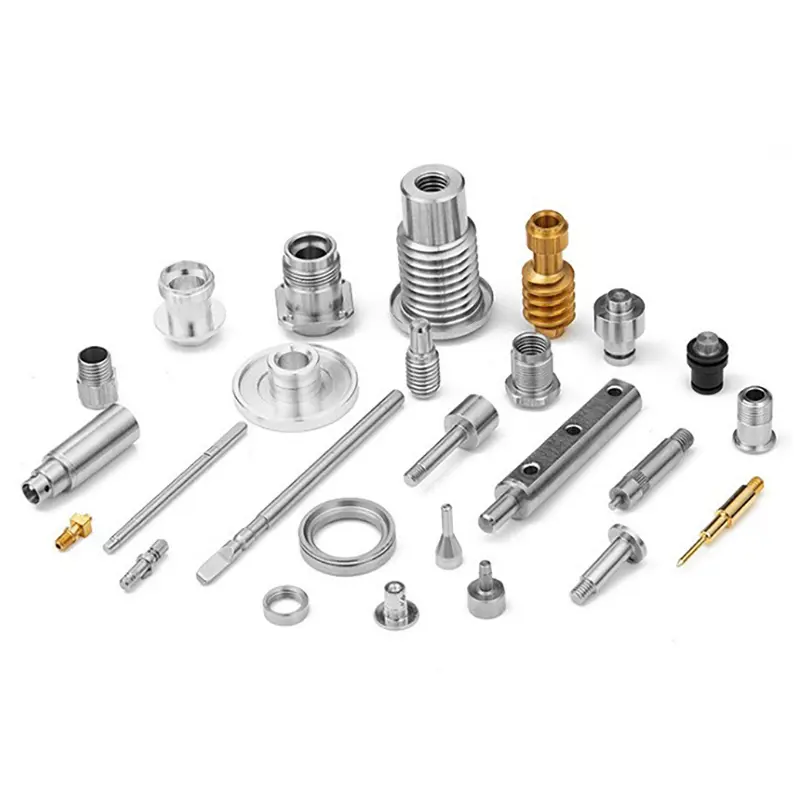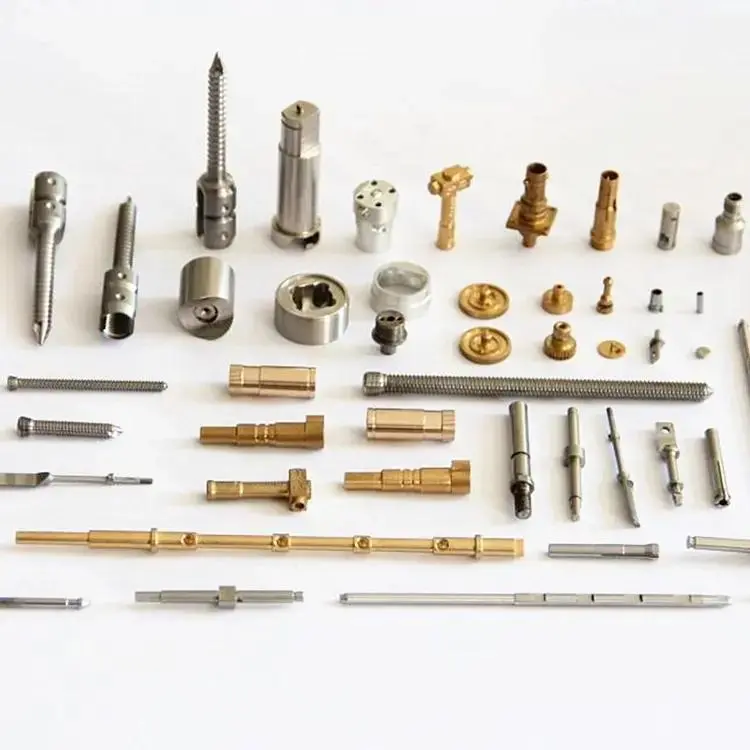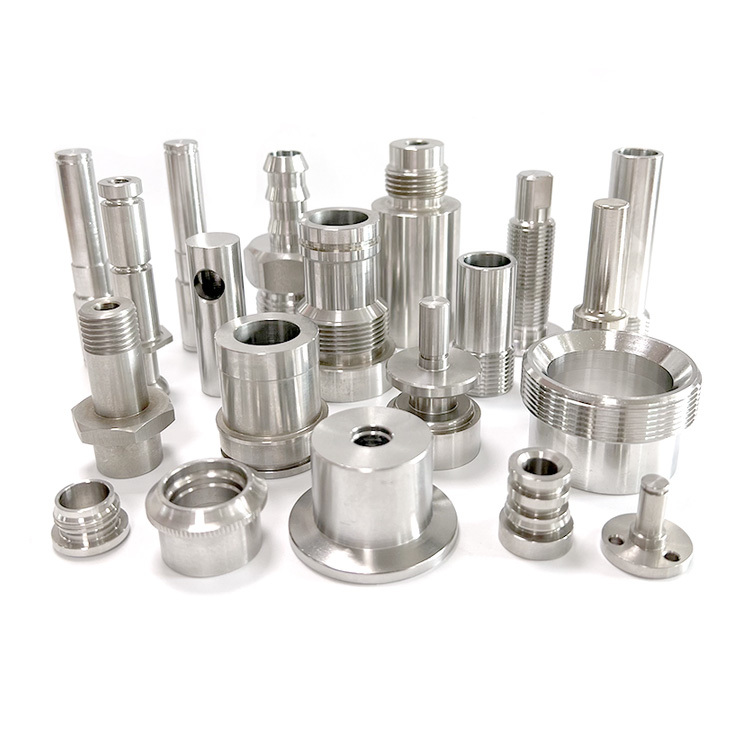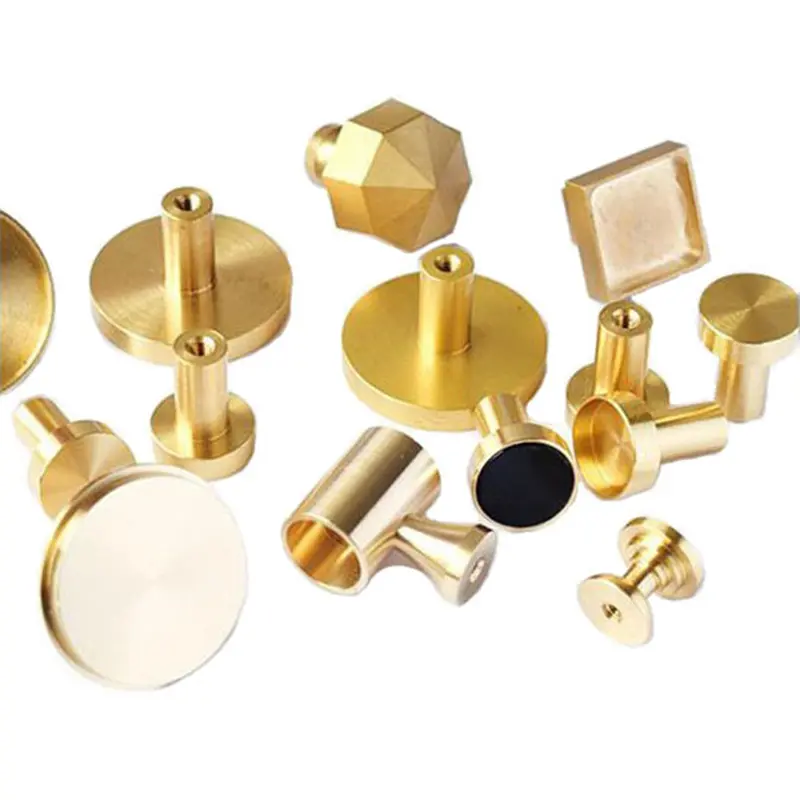Understanding the Different Types of CNC Machining Parts Available: A Comprehensive Guide
Published Time:
2025-10-10
Understanding the Different Types of CNC Machining Parts Available
CNC machining has revolutionized the manufacturing industry by providing high precision, efficiency, and versatility. The process involves using computer-controlled machines to cut, shape, and finish materials such as metal, plastic, and wood. In this article, we will explore the different types of CNC machining parts available, their applications, and the technology behind them. Understanding these aspects will allow manufacturers to make informed decisions when selecting CNC machined parts for their projects.
Table of Contents
- What is CNC Machining?
- Types of CNC Machining Processes
- Types of CNC Machined Parts
- Applications of CNC Machining Parts
- Benefits of CNC Machining
- How to Choose the Right CNC Machining Part
- The Future of CNC Machining Technology
- Frequently Asked Questions
- Conclusion
What is CNC Machining?
CNC (Computer Numerical Control) machining is a manufacturing process that utilizes computer-controlled tools to create parts and products from various materials. By automating the machining process, manufacturers can achieve high precision and repeatability with reduced human error. CNC machining is widely used in industries such as aerospace, automotive, medical devices, and consumer electronics, where intricate designs and high-quality components are essential.
Types of CNC Machining Processes
There are several types of CNC machining processes, each designed for specific tasks and materials. The most common methods include:
1. CNC Milling
CNC milling involves using rotary cutters to remove material from a workpiece. This method is ideal for creating complex geometries, contours, and surface finishes. CNC mills can operate in multiple axes, allowing for intricate designs that meet exact specifications.
2. CNC Turning
CNC turning is a process where material is removed from a rotating workpiece using cutting tools. This technique is primarily used for producing cylindrical parts and is ideal for high-volume production runs. CNC lathes can create various shapes, including threads, grooves, and tapers.
3. CNC Drilling
CNC drilling focuses on creating holes in a workpiece using rotating drill bits. This process can produce holes of various sizes and depths, making it a vital technique in many applications.
4. CNC Sintering
CNC sintering is a technique used to create parts from powdered materials. The powder is compacted and then heated to form a solid object without melting it. This process is typically utilized for metal and ceramic parts.
5. CNC 3D Printing
CNC 3D printing, or additive manufacturing, builds parts layer by layer from a digital design. This technology is gaining popularity due to its ability to create complex shapes that are difficult or impossible to achieve with traditional machining methods.
Types of CNC Machined Parts
Understanding the different types of parts produced through CNC machining is crucial for selecting the right components for your projects. Each type of part serves distinct purposes and applications.
CNC Milled Parts
CNC milled parts are produced through the milling process, which allows for high precision and intricate designs. Common applications include:
- **Brackets**: Used to support and stabilize structures.
- **Housings**: Created for electronic devices and machinery.
- **Custom Components**: Tailored parts for specific applications in various industries.
Milled parts can be made from materials such as aluminum, steel, and plastics, depending on the desired strength and weight.
CNC Turned Parts
CNC turned parts are typically cylindrical and are produced through the turning process. They are used in applications such as:
- **Shafts**: Essential components in motors and machinery.
- **Bolts and Fasteners**: Used for securing parts together.
- **Pulleys**: Integral to many mechanical systems.
These parts can be manufactured with high accuracy, ensuring compatibility with other components in assembly.
CNC Drilled Parts
CNC drilled parts are characterized by the holes created during the drilling process. Applications include:
- **Mounting Holes**: Facilitating the attachment of components.
- **Fluid Passages**: Used in hydraulic and fluid systems.
- **Ventilation Holes**: Essential in electronic enclosures.
Precision drilling can significantly enhance the functionality and efficiency of the final product.
CNC Sintered Parts
CNC sintered parts are created from powdered materials and are known for their durability and strength. Common applications include:
- **Heat Exchangers**: Used in automotive and industrial settings.
- **Filters**: Effective in various filtration applications.
- **Structural Components**: Providing strength in lightweight designs.
The sintering process allows for the production of parts with complex geometries that traditional methods may not achieve.
CNC 3D Printed Parts
CNC 3D printed parts have gained popularity due to their ability to produce complex shapes quickly and cost-effectively. Applications include:
- **Prototypes**: Allowing for rapid design iterations.
- **Custom Tools**: Designed for specific tasks within manufacturing.
- **Artistic Pieces**: Creating intricate designs in a variety of materials.
The flexibility of 3D printing makes it an attractive option for industries seeking innovation and adaptability.
Applications of CNC Machining Parts
CNC machined parts are utilized across numerous industries due to their precision and reliability. Key applications include:
- **Aerospace**: Components such as turbine blades and structural parts require high precision and lightweight materials.
- **Automotive**: CNC machined parts are essential for engine components, transmission parts, and structural elements.
- **Medical Devices**: Precision is critical in manufacturing surgical instruments, implants, and diagnostic equipment.
- **Consumer Electronics**: Parts for smartphones, computers, and home appliances rely on CNC machining for quality and performance.
The versatility of CNC machining allows it to adapt to the specific requirements of each industry, ensuring optimal results.
Benefits of CNC Machining
The advantages of using CNC machining for manufacturing parts are numerous:
1. **Precision and Accuracy**: CNC machines can produce parts to tight tolerances, minimizing errors and ensuring quality.
2. **Repeatability**: Once programmed, CNC machines can consistently produce identical parts, making them ideal for large production runs.
3. **Versatility**: CNC machining can accommodate various materials and complex designs, making it suitable for diverse applications.
4. **Reduced Labor Costs**: Automation reduces the need for skilled labor, lowering production costs and increasing efficiency.
5. **Shorter Lead Times**: The speed of CNC machining allows for quicker turnaround times, facilitating rapid production and delivery.
These benefits make CNC machining an attractive choice for manufacturers aiming for efficiency and quality.
How to Choose the Right CNC Machining Part
Selecting the appropriate CNC machined part for your project involves considering several factors:
- **Material Selection**: Choose a material that fits the specific application and performance requirements.
- **Complexity of Design**: Determine whether the part's complexity can be achieved with the chosen machining process.
- **Volume of Production**: Assess whether the production volume justifies the investment in CNC machining.
- **Cost Considerations**: Balance the cost of machining with the required quality and performance of the part.
By evaluating these factors, manufacturers can ensure they select the most suitable CNC machined parts for their needs.
The Future of CNC Machining Technology
The CNC machining industry is continually evolving. Emerging technologies such as artificial intelligence, machine learning, and advanced materials are set to revolutionize the landscape.
- **Smart Manufacturing**: Integration of IoT devices will enable real-time monitoring and data analysis, optimizing production processes.
- **Advanced Materials**: The development of new materials will expand the capabilities of CNC machining, allowing for stronger and lighter components.
- **Automation and Robotics**: Enhanced automation will further reduce labor costs and improve efficiency in the manufacturing process.
These advancements promise to enhance the capabilities of CNC machining, paving the way for innovation in various industries.
Frequently Asked Questions
1. What materials can be used in CNC machining?
CNC machining can work with a wide range of materials, including metals (aluminum, steel, titanium), plastics (acrylic, nylon, polycarbonate), and composites.
2. How does CNC machining differ from traditional machining?
CNC machining utilizes computer-controlled machines for automated precision, while traditional machining often relies on manual labor and processes.
3. What industries benefit from CNC machining?
Industries such as aerospace, automotive, medical, and consumer electronics benefit significantly from CNC machining due to its precision and versatility.
4. How can I ensure the quality of CNC machined parts?
Quality can be ensured by selecting reputable manufacturers, using high-quality materials, and implementing strict quality control measures throughout the production process.
5. What are the cost factors associated with CNC machining?
Cost factors include material selection, complexity of design, production volume, and the specific machining processes used.
Conclusion
In conclusion, understanding the different types of CNC machining parts available is essential for manufacturers looking to leverage this technology for their projects. From CNC milled parts to 3D printed components, each type of part serves unique applications across various industries. The benefits of CNC machining, including precision, repeatability, and versatility, make it a vital process in modern manufacturing. As technology continues to advance, CNC machining will undoubtedly play an increasingly important role in shaping the future of production and innovation. By selecting the right CNC machined parts and processes, manufacturers can achieve optimal outcomes and maintain a competitive edge in their respective industries.
Previous Page
Previous Page
NewsCenter
Beijing Pafinal Precision Machinery Co., Ltd.
Email:sales@pafinal.com

Address: No. 239 Huanhe South Road, Tianjin Pilot Free Trade Zone (Airport Economic Zone), Tianjin
中企跨境-全域组件
制作前进入CSS配置样式
sales@pafinal.com:
Whatsapp:
在线客服添加返回顶部
图片alt标题设置: PAFINAL
表单验证提示文本: Content cannot be empty!
循环体没有内容时: Sorry,no matching items were found.
CSS / JS 文件放置地




 2025-10-10
2025-10-10


